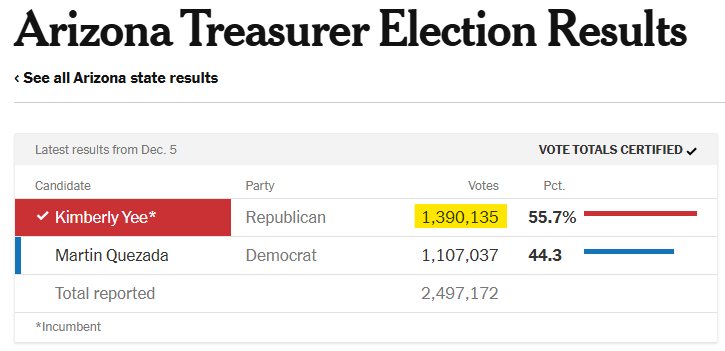Malevolence and Punishment
Can you punish the "evil" out of someone? I don't know to tell you the truth -- but I'd be willing to bet the answer is NO. Can you sit someone in the corner until they decide to stop being evil? Likely not. Keep in mind that this essay is about hypotheticals.
Is it even possible to sufficiently punish someone, to the extent that they no longer want to commit malice towards others, or is it that you can scare them into submission, or perhaps they continue to get away with it -- until someone stops them? Once stopped, can they truly be reformed?
These are serious questions, because they determine how most people perceive the world around them.
Throughout history there have been evil people. But the level to which they are seen as "evil" varies based on the time period. For example, medieval torture practitioners were considered at the time to be "eccentric." We look at those acts now, and they are seen (rightfully so) as cruel and unusual.
Fast forward to today and things are quite different, in most of the world.
But there have been truly evil people running reeducation camps and torturing large numbers of people. In some parts of the world they still are, you just don't hear about it. Here in the US, the camps most hammered into people's minds are those run by Nazi Germany, but those were not the only reeducation camps. There were camps in many other countries that were specifically designed to break the spirit of the people contained within. Not to "reeducate" them, but to torture them until their very last breath. A sort of Hell on earth situation, run by the most sadistic people that could be found.
I think it's hard to argue that those who committed such acts are not evil. Similarly, I don't think a strong argument could be made that someone with the capacity to perform such acts could be "reformed."
A mental line is crossed when someone gets to that point. Perhaps they were always that way? Perhaps it was learned behavior. Many people who have come home from wars are haunted by the things they were capable of in such situations. Nobody can be sure how they will act in all situations. It's in those moments that people truly have to face their own being. That can be one of the most deeply moving, and deeply disturbing situations a person will ever encounter.
But back to the issue at hand. Can any of these kinds of human actions be avoided by the proper amount of punishment? Well, let me throw another curveball into this situation. Consider, what if the punishment makes the person (being punished) realize that they didn't commit their crimes in the "proper manner?" In other words, they are being punished because they didn't cover their tracks (well enough) -- not because what they were doing was wrong. I imagine that that is the situation the vast majority of the time, at least as it pertains to murderers.
Keep in mind that the majority of people who commit premeditated murder have already rationalized it in their minds. This is usually because the situation that drove them to the point of wanting to kill someone -- was outside of the bounds of law. Someone might have bullied them, or tormented them in a way that's technically "legal, but seriously messed up. Crimes can and are committed within the bounds of the law.
So what is any society to do? Well, there are limited options, and most of these issues have been fleshed out long ago. In fact, most people intrinsically understand this -- it's only in modern times that people have become so sheltered, as to believe that everything and everyone can be "healed." That's simply not the case. Not everyone can be afforded a second chance, nor do they want it.
Righteous indignation is not something that can easily be thwarted. People don't forget a perceived wrong -- not easily. And if that perceived wrong is "wrong enough" their perceived answer might be to put the perpetrator to death. We've seen this exemplified throughout history.
If everyone can be "healed" (their perceived wrongs corrected) why couldn't we end crime -- by capturing all of the criminals? Wouldn't there be a point where the last criminal is captured? Or, as I believe, some criminals are created spontaneously as various situations and opportunities present themselves.
Considering all of the above, what is the answer? The most obvious answers are containment, or death. After a horrific crime has been committed what other options are there?
How do you head off this possibility? I would imagine it would involve some form of "social engineering." Not the overt kind, but the kind that achieves largely positive outcomes by design. A system that rewards positive behavior as a result of participating in society. That is not to say that the laws should not punish bad behavior, but rather, laws should support and foster the methods and outcomes that result in people (whether knowing it or not) working on tasks that are beneficial to society.
However, this seems antithetical to what is expected in a free society. Social engineering to the level necessary get rid of all crime, would likely be tyrannical. As a result "right and wrong" would be highly subjective and often weighed against the overall outcomes of various people groups, and not based on individual outcomes.
A rights based system is the only way to achieve an approximate balance between right and wrong -- without moving into overtly tyrannical territory. God given rights can be clearly defined, and are far less subjective to opinion than what is right or wrong.
Or look at it this way, what system requires very specific behavior of its adherents -- to the point that they are ruled over to the extent that the outcomes are very predictable? Prison. That's the system that forces compliant behavior, a prison system.
Understanding that people are flawed is the philosophical basis for equally applied laws in a free society. People will never be perfected, as such, government and laws are necessary. And sometimes people have to be taken out of society -- because they will not follow the law. The law of course covers those who can not follow the law as well, those who lack mental capacity, or those who are insane.
Criminals, and the criminally insane will likely end up being removed from "voluntary society" and moved into some sort of prison, where societal norms are forced, not coerced.
The picture I used at the beginning of this essay is from one of the creepiest two Sci-Fi episodes I've ever seen. If you're unfamiliar with Doctor Who, you might be more interested after this particular episode S2 E18 and E19 (of the newer Doctor Who series).
Doctor Who is a time traveler, thousands of years old, and has pretty much seen it all, but in this episode even he is freaked out.
The entity he and his time travelling companion encounter is unlike anything he's dealt with before, and in fact might be the actual "Devil" as is referred to in many religious texts.
To the Doctor's question as to which Devil he is, given that there are so many religions, the Beast answers that he is all of them. He explains that the Disciples of the Light rose up against him leaving him defeated, and subsequently chained in the pit for all eternity. He states this occurred before the creation of this universe, to which the Doctor retorts that this is impossible as nothing could exist before the creation of the universe. The Beast asks the Doctor if that is his religion; a question that the Doctor can only answer with that is what he believes. The Beast tells the crew that they know nothing.
This begs the question, why was the Devil imprisoned by the Disciples of the Light and not reformed? Because sometimes people can't be reformed -- sometimes they are just evil.
What do you think?
Please leave a comment, like it or hate it... You DO NOT need to register to leave a comment. Email addresses are NOT used. Just make one up "someone@somehost.com"
How to Add Windows Group Policy Objects and Editor to Windows 10 and 11
Many people are fed up with Windows Updates. They can't be turned off, and they're a serious nuisance. In an earlier post I covered how to effectively turn Windows Updates off through Group Policy. However, If you don't have Windows 10 or 11 Pro, you don't have access to the Group Policy objects, or even the Group Policy Editor.
Never fear, there is a way to install the Group Policy objects and editor in Windows 10 and 11 Home edition.
Before we get into it, it I have put up the usual disclaimers:
- Backup your computer before starting.
- Backup the Windows Registry before starting.
- Ask your doctor if Windows Group Policy is right for you.
- WindUpRubberFinger.com may contain testimonials by users of our products and/or services. These testimonials reflect the real-life experiences and opinions of such users. However, the experiences are personal to those particular users, and may not necessarily be representative of all users of our products and/or services. We do not claim, and you should not assume, that all users will have the same experiences. YOUR INDIVIDUAL RESULTS MAY VARY.
- Void were prohibited.
Now that we have that out of the way we can start. If you've attempted to correct issues on a corrupted Windows 7 and up installation you might be familiar with DISM. DISM (Deployment Imaging Servicing Management [tool]) is used to repair corrupted Windows Images, pulling files either from some local repository or an online Microsoft repository.
DISM is often used in conjunction with the SFC (System File Checker) command.
The sfc /scannow command will scan all protected system files, and replace corrupted files with a cached copy that is located in a compressed folder at %WinDir%\System32\dllcache.
The %WinDir% placeholder represents the Windows operating system folder. For example, C:\Windows.
DISM is how you add the Group Policy Objects and Editor to your Windows Home installation.
I found the instructions below on Microsoft TechNet, somebody must have flown under the RADAR, or it was their last day working for M$. I would credit the author, but I only copied the text. I was in the middle of migrating my VMs from ESXi 6.0 to Proxmox 8.2.2 (but that's a story for another day). I came across this tutorial while looking for something completely different -- but I new it was worth saving.
I haven't personally done this but I have no reason to believe that it wouldn't work.
Fortunately, Windows 10 Home has the undocumented option to install the gpedit.msc editor from the Windows image packages and manifests repository (\Windows\servicing\packages).
How to Enable the GPEdit.msc on Windows 10 and 11 Home?
To install the Local Group Policy Editor in Windows 10 Home edition, open a command prompt as administrator and run two one-line commands in sequence:
FOR %F IN ("%SystemRoot%\servicing\Packages\Microsoft-Windows-GroupPolicy-ClientTools-Package~*.mum") DO (DISM /Online /NoRestart /Add-Package:"%F")
FOR %F IN ("%SystemRoot%\servicing\Packages\Microsoft-Windows-GroupPolicy-ClientExtensions-Package~*.mum") DO (DISM /Online /NoRestart /Add-Package:"%F")
Also these commands can be used to install gpedit.msc console in Windows 11 Home.
For convenience, you can save this code to a text file gpedit-install.bat and run it as administrator. Wait a while until DISM installs the packages from the Windows 10 component store.
In my case, the ClientTools and ClientExtensions packages were installed in Windows 10 Home:
Microsoft-Windows-GroupPolicy-ClientTools-Package~…~amd64~~….mum
Microsoft-Windows-GroupPolicy-ClientTools-Package~…~amd64~en-US~….mum
Microsoft-Windows-GroupPolicy-ClientExtensions-Package~…~amd64~~….mum
Microsoft-Windows-GroupPolicy-ClientExtensions-Package~…~amd64~en-US~….mumNow try to run the gpedit.msc console. The Local Group Policy Editor interface should open (no reboot required). The GPO editor is fully functional even in the Home edition of Windows 10 or Windows 11, and contains all the necessary policy sections that are available in the Pro/Enterprise editions."
Once this completes, you'll be able to use the information in my previous post How To Stop Constant Windows Updates (Windows 10 and 11).
I would test this in a VM, but I don't have a copy of Windows Home.
If you use this method, let me know in the comments.
Please leave a comment, like it or hate it... You DO NOT need to register to leave a comment. Email addresses are NOT used. Just make one up "someone@somehost.com"
How To Stop Constant Windows Updates (Windows 10 and 11)
I'm sure that anyone using Windows 10 or 11 is tired of the constant "forced" updates.
You might have something open in a word processor, or maybe you're even testing something for work. The updates that are pushed are a problem -- because you can't be sure that your computer isn't going to be restarted when you're not looking.
For me, it reminds me of pausing a game on the Nintendo Game Console from the 1980s. Sure you can pause it, and go back to it the next day (for games that have no save feature or codes) but is the machine actually going to work the next day? Well, I'm sure anyone who has play Nintendo back in those days remembers, normally the console is frozen the next day.
Micro$oft Windows should (definitely by now) be more reliable than a 1980s Nintendo Game Console. But alas, because of constant updates -- it's really not.
However, there is a work-around, but it requires that the user have a Windows 10 or 11 Pro or Enterprise installation. If you don't have a Windows 10 or 11 Pro or Enterprise installation, you won't be able to make the necessary settings changes.
I'll have to do another post on how to enable Group Policy settings on Windows Home installations. I have seen the instructions to do it, but I've never personally implemented them because I've always run Pro versions of Windows since the XP days.
You'll have to open the Group Policy Editor, in order to do this, open a Windows run dialog by pressing the Windows key on your keyboard, then typing "gpedit." The group policy editor should show up.
I'll illustrate how to stop the automatic updates here:
Then there's this:
You might notice where I have a comment of just "y" in the Group Policy Editor. I did this so that when I make changes, I can easily find the objects I have changed. In the Group Policy Editor, you can sort by comment "yes" or "no." This makes it easy to go back to objects I have changed in the past.
With these two settings configured, your machine will auto download updates, but will not auto install them. Furthermore if the updates are installed, the machine will not auto restart, a user will have to allow it to restart.
The only reason I allow for the auto downloading of updates is because there were issues in the past when Windows would go too long without downloading updates. There sometimes could become corruption of the files that are used in the updates. So, I allowed them to be downloaded, only because there would be a running history of whatever updates should be done, stopping the Windows Installer from going wonky.
If you implement these changes, you'll still be nagged by Windows, but you will not be forced to update, and your machine will not restart on its own.
Give it a try and tell me what you think.
Please leave a comment, like it or hate it... You DO NOT need to register to leave a comment. Email addresses are NOT used. Just make one up "someone@somehost.com"
Fixing Your Mouse Sensitivity in Linux
I'm sure that this isn't a particularly interesting subject, but if you've used Linux as a desktop OS you might just be interested.
I've become more and more annoyed by Micro$oft as the years have gone by.
That being said, Linux is the obvious choice. Linux has come so far in recent years that it rivals any paid-for operating system -- even for novice users. Linux is stable and runs the same software (for the most part) that you might run on a Windows or a Mac machine.
I'm writing this post on a Toshiba laptop running MX Linux, It was given to me by a relative. It originally had Windows 7 on it. I put 16 gigs of RAM in this machine for $18 after tax. The only downside was that it had a mechanical hard drive, not an SSD, but I fixed that.
I installed MX Linux 23.4 and began setting things up.
I love the OS, it's snappy and things work well. Most of the software I use is preinstalled as part of the standard package.
The only downside was the mouse sensitivity. I'm running the vanilla XFCE version, which allows for lots of configurable options, themes, and tweaks to the GUI to make things look and feel the way you would like them. However, when I plugged in my Logitech M17c wireless mouse, things got squirrelly. So I went to adjust the mouse settings and go about my business, but something was missing!
Notice there is acceleration and sensitivity.
Here's what I saw.
There is no sensitivity. These newer mice all have really high DPI so their sensitivity is insane. That's why mouse pads are now made of super smooth cloth-type material.
Without a sensitivity setting, there was no way to tamp down the overly sensitive mouse. Highlighting things was a nightmare, because 1/16th of an inch of movement was equal to 7 characters of a size 12 font!
After searching for quite some time about how to change the mouse sensitivity I found that the driver used by XFCE had changed, the current one lists different properties than the older one did. It's not that things can't be adjusted, they just have to be adjusted a different way.
More searching revealed that not many people knew how to adjust the mouse sensitivity. Normally with anything Linux related you can find where people have run into and solved the vast majority of issues you might run into. But not this time.
There are commands you can issue that will show what the mouse settings are, but first you have to find out which device it's listed as.
$ xinput -list
⎡ Virtual core pointer id=2 [master pointer (3)]
⎜ ↳ Virtual core XTEST pointer id=4 [slave pointer (2)]
⎜ ↳ SynPS/2 Synaptics TouchPad id=11 [slave pointer (2)]
⎜ ↳ Logitech Wireless Mouse id=13 [slave pointer (2)]
⎣ Virtual core keyboard id=3 [master keyboard (2)]
↳ Virtual core XTEST keyboard id=5 [slave keyboard (3)]
↳ Power Button id=6 [slave keyboard (3)]
↳ Video Bus id=7 [slave keyboard (3)]
↳ Power Button id=8 [slave keyboard (3)]
↳ TOSHIBA Web Camera - HD: TOSHIB id=9 [slave keyboard (3)]
↳ AT Translated Set 2 keyboard id=10 [slave keyboard (3)]
↳ ACPI Virtual Keyboard Device id=12 [slave keyboard (3)]
↳ Logitech Wireless Mouse id=14 [slave keyboard (3)]
Now that you know the device ID you can issue another command to show the properties for that device ID, the Logitech mouse:
$ xinput -list-props 13 Device 'Logitech Wireless Mouse': Device Enabled (177): 1 Coordinate Transformation Matrix (179): 0.370000, 0.000000, 0.000000, 0.000000, 0.370000, 0.000000, 0.000000, 0.000000, 1.000000 libinput Natural Scrolling Enabled (323): 0 libinput Natural Scrolling Enabled Default (324): 0 libinput Scroll Methods Available (327): 0, 0, 1 libinput Scroll Method Enabled (328): 0, 0, 0 libinput Scroll Method Enabled Default (329): 0, 0, 0 libinput Button Scrolling Button (665): 2 libinput Button Scrolling Button Default (666): 2 libinput Button Scrolling Button Lock Enabled (667): 0 libinput Button Scrolling Button Lock Enabled Default (668): 0 libinput Middle Emulation Enabled (333): 0 libinput Middle Emulation Enabled Default (334): 0 libinput Accel Speed (335): 0.440000 libinput Accel Speed Default (336): 0.000000 libinput Accel Profiles Available (337): 1, 1 libinput Accel Profile Enabled (338): 1, 0 libinput Accel Profile Enabled Default (339): 1, 0 libinput Left Handed Enabled (340): 0 libinput Left Handed Enabled Default (341): 0 libinput Send Events Modes Available (300): 1, 0 libinput Send Events Mode Enabled (301): 0, 0 libinput Send Events Mode Enabled Default (302): 0, 0 Device Node (303): "/dev/input/event14" Device Product ID (304): 1133, 16468 libinput Drag Lock Buttons (342):libinput Horizontal Scroll Enabled (343): 1 libinput Scrolling Pixel Distance (344): 15 libinput Scrolling Pixel Distance Default (345): 15 libinput High Resolution Wheel Scroll Enabled (346): 1
However, there is no sensitivity setting listed -- only acceleration. This is why it didn't show up under the mouse settings.
The question then becomes, "Is this the result of using a Logitech mouse, or is this a just the way that the XFCE driver works?" It appears that it's at the driver level. I tried multiple different mice, and none of them show properties for sensitivity.
Some versions of Linux use the "evdev" kernel-level driver and others use "libinput" the xorg-driver. That's where the difference is. Apparently the libinput driver is better suited for touch pads from what I've read.
Wanting to modify the OS as little as possible, I looked for some way to adjust the mouse sensitivity natively. Again this was a long and exhaustive search. Eventually I started poking around on my own.
I decided to change the Coordinate Transformation Matrix values. They appear in (3) groups of (3) numbers.
The first two groups of 3 represent the (x) and (y) coordinates, the last value of 1.000000 needs to be left unchanged, if it is changed to anything other than "1" none of the other changes will take effect. I started by changing all of values of 1.000000 to 5.000000, and nothing changed at all. So then I tried changing them to fractional values, this also resulted in no change. Lastly, I tried changing just the first two from 1 to 5 -- that made the mouse nearly useless it was so sensitive. But there was a change. Next I tried with fractional values and found that the sensitivity was reduced. After messing around with the sensitivity and acceleration I found what worked best with my wireless mouse.
Here's what the optimal settings look like.
$ xinput -list-props 13 Device 'Logitech Wireless Mouse': Device Enabled (177): 1 Coordinate Transformation Matrix (179): 0.370000, 0.000000, 0.000000, 0.000000, 0.370000, 0.000000, 0.000000, 0.000000, 1.000000
The downside is that if I unplug the mouse, or reboot the computer the defaults return. I'm sure there is a way to make the changes persistent, but I wasn't sure what might happen if I use a different mouse at some point. So I decided to write a simple shell script and place it on the desktop so I can double click it and put the mouse settings to where I want them.
#!/bin/sh # This will set the mouse properties for a Logitech M317 wireless mouse. # The default sensitivity is too high. #Mouse Sensitivity xinput --set-prop 13 179 0.370000, 0.000000, 0.000000, 0.000000, 0.370000, 0.000000, 0.000000, 0.000000, 1.000000 #Mouse Acceleration xinput --set-prop 13 335 0.500000 exit 0
For now this will suffice. I don't change the mouse that often, and I usually suspend this computer when I'm not using it, so I don't have to change the settings frequently enough to worry about it.
I read many articles where people were searching for a way to adjust the mouse sensitivity -- and that was the only reason that they weren't using Linux as their primary operating system. Maybe this can help someone to make the switch!
Please leave a comment, like it or hate it... You DO NOT need to register to leave a comment. Email addresses are NOT used. Just make one up "someone@somehost.com"
Are Polls Really Believable?
Polls come out all the time. Trump is up, Kamala is down, it’s all over the place.
Usually the differences can be explained, but sometimes it’s not so easy. Recent polls for North Carolina shows that Trump is ahead, but a democrat is leading in the race for governor.
There are plenty of reasons that this could happen, but how likely are they. For example, let’s assume that the republican candidate for governor is not very well liked, it’s possible that someone could vote for a democrat governor, and a republican presidential candidate — but how realistic is that? It’s hard to say.
Most polls are, “within the margin of error.” The question then becomes, “How many democrat voters are going to vote for Trump?”
That’s why AZ was so sketchy in 2022. The republican state treasurer received more votes than either of the two gubernatorial candidates?
That’s a pretty big difference. Who shows up to the polls for the state treasurer’s race?
Did any polls predicted that outcome? None that I can find. But they might be out there.
What do you think?
Please leave a comment, like it or hate it... You DO NOT need to register to leave a comment. Email addresses are NOT used. Just make one up "someone@somehost.com"













